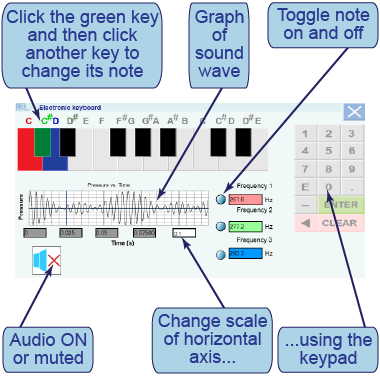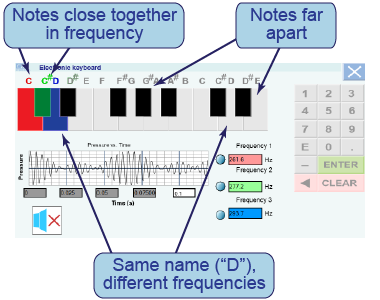| | Essential questions | | How do we understand sound?
How can sound contain so much information? | |
|
For most people, sound creates one of the richest information flows into your brain. Sound is also a model for a whole class of physical phenomena involving waves. The creation, transmission, and recording of sound have driven a host of human inventions from the earliest musical instruments to mp3 players and electric guitars. This investigation explores some of the basic properties of sound waves. 
|
Part 1: The perception of frequency

- Use the interactive keyboard to play and observe different single-note sounds.
- The volume control on your computer sets the volume.
- What property of sound corresponds to the perception of high or low pitch?
- How long does a single oscillation of a 349 Hz sound wave take?
- Can you come up with a mathematical relationship between the frequency of a sound and the time it takes to make one complete oscillation (the period)?

|
In this interactive keyboard, you can press the white and black keys to generate sounds using the computer’s sound card and output speakers—as well as see the sound waves corresponding to those sounds.
|
Part 2: The richness of sound

- Listen to two different frequencies of sound at the same time.
- Play notes that are close together and that are far apart.
- Play notes that have the same name but different frequencies.
- Can you distinguish the two individual frequencies?
- How does a two-frequency sound wave compare with a single frequency?
- Are there combinations that sound bad and, if so, when do they occur?

| |
| |
|

